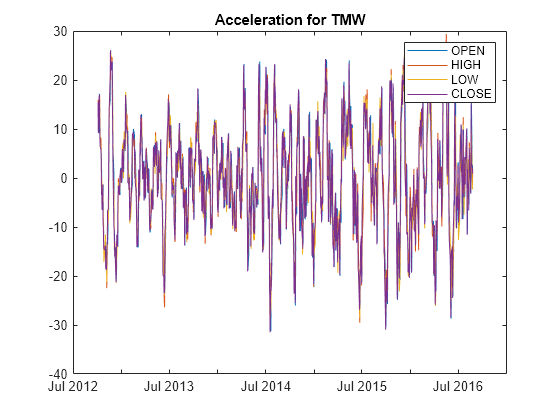tsaccel
时间之间的加速度
说明
acceleration = tsaccel(Data)
n 个周期。
acceleration = tsaccel(___,Name,Value)
示例
输入参数
名称-值参数
输出参量
详细信息
参考
[1] Kaufman, P. J. The New Commodity Trading Systems and Methods. John Wiley and Sons, New York, 1987.
